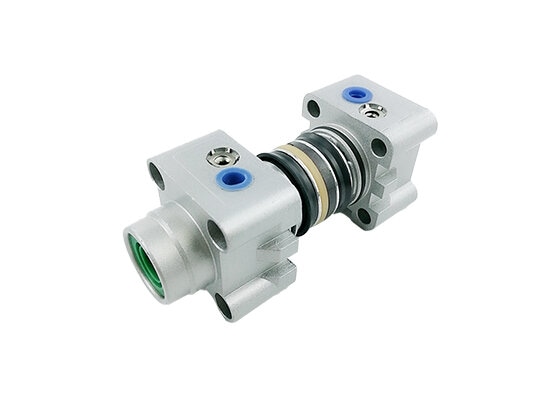

Shock absorption: When the piston reaches the end of its stroke, the cushion dissipates kinetic energy to prevent direct metal-to-metal impact.
Noise reduction: Lowers the impact noise generated during high-speed cylinder operation.
Extended service life: Reduces mechanical wear on the cylinder barrel, piston rod, and end covers.
Improved stability: Ensures smoother motion and enhances positioning accuracy.
A cylinder buffer absorbs the kinetic energy when the piston reaches the end of its stroke through elasticity or damping, preventing direct metal-to-metal impact. This reduces wear, extends the cylinder's service life, improves motion stability, and reduces noise.
The ISO 6431 standard cylinder buffer features excellent stability under high-speed and heavy-load conditions, with the DNC buffer being a typical example. The DNC buffer component has an adjustable conical throttle, which gradually reduces airflow and effectively decreases the piston speed before metal contact occurs. Compared with conventional straight-through buffers, it provides a smoother deceleration and avoids “hard impacts.”

Links: www.fescolo.com(Pneumatic)
FOKCA ©1998-2025 All Rights Reserved Sitemap